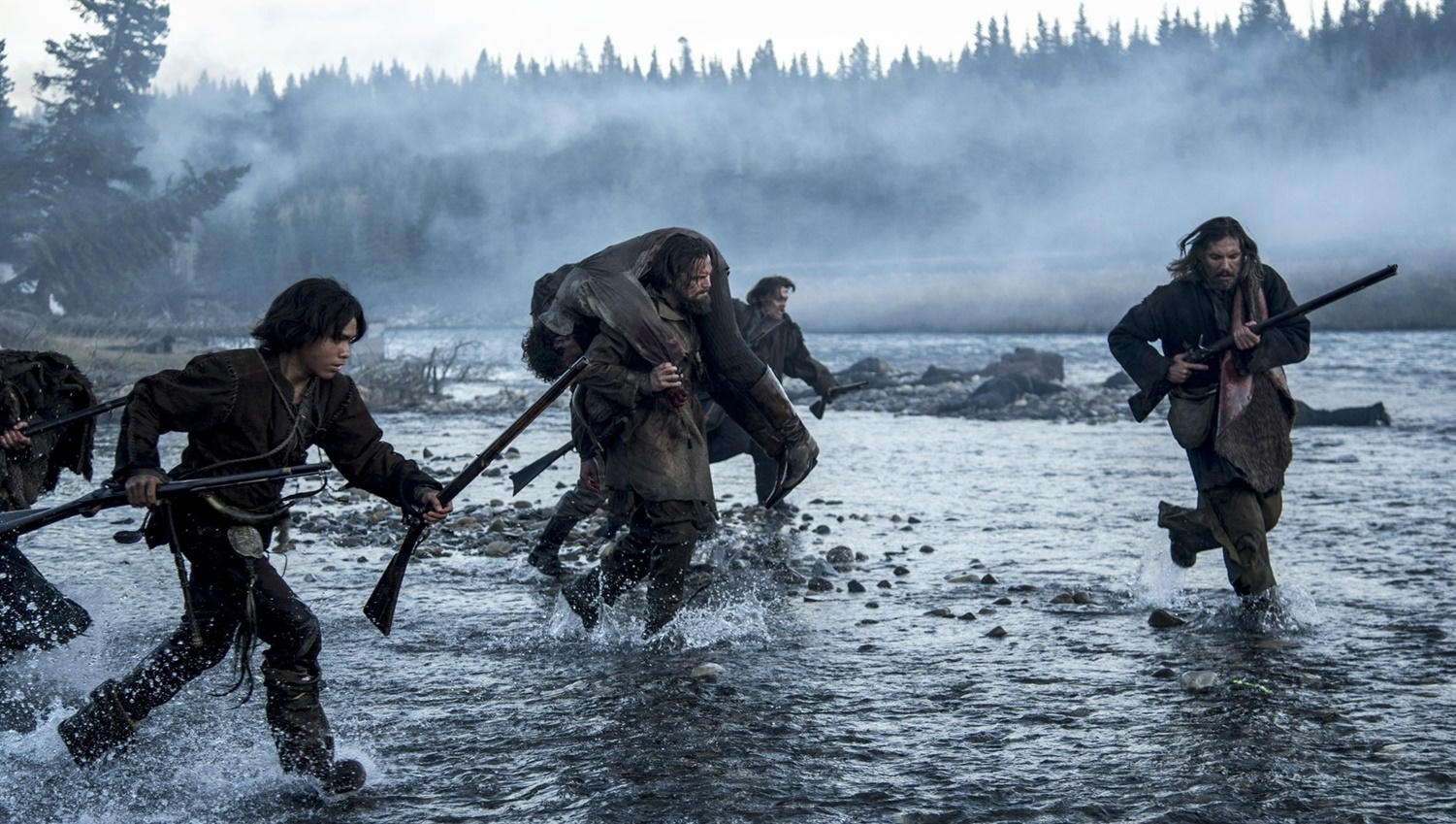
The Revenant
Dustin Chase
Don’t go into Academy Award winning director Alejandro González Iñárritu’s new film “The Revenant” because you want to see a bunch of Leonardo DiCaprio wilderness fight scenes. Instead, experience this cinematic event as it delivers beautiful long takes capturing some of the most alluring images ever captured on film. While so much is being made about the gruesome scene involving the main character and a mother grizzly bear, the images I can’t get out of my mind are landscapes, frozen waterfalls, and the ambitious decision only using natural light to provide an even further authentic experience. Emmanuel Lubezki’s cinematography is the true star of “The Revenant” with Ryuichi Sakamoto’s original score the most effective use of music in film this year.
In 1823 Hugh Glass (DiCaprio) was hired by General William Henry Ashley (Gleeson) to lead a fur trapping expedition into the wilderness of Upper Missouri River (modern day North/South Dakota and Montana). Before the 100 frontiersmen could make the treacherous trek back to camp with their fur pelts, Arikara warriors attacked. Most of Ashley’s men either dead or severely wounded flee with Glass and his Pawnee son (Forrest Goodluck) guiding them through Yellowstone River. When Glass is mauled by a grizzly bear, the remaining men are forced to leave him behind for dead. Through enduring strength that has become legend, Glass recovers enough to track down the man responsible for taking everything from him.
All the challenging elements provide the cinephile with a truly immersive journey.
“The Revenant” (meaning to come back) is a brutal film that demands a tough stomach, patience and an understanding Iñárritu’s storytelling decisions. His script and some of the visual narrative conjure up memories of “Gladiator” (another warrior losing everything) but this is more than just a revenge film. Iñárritu (“Birdman”) and Lubezki (“Gravity”) embed the viewer into the remote location (no film has ever been shot in this particular part of Canada) so much that you can feel the cold. Use of natural light creates an effect that feels like we are looking back in time with devastating clarity. Lubezki’s lens moves around like a butterfly in 360 degrees while the choreography allows scenes to run minutes long without a cut, all elements provide the cinephile with a truly immersive journey.
There are two ways of looking at “The Revenant”, which might finally earn four time Oscar nominated DiCaprio his first statue. Some viewers will only see this as a half dead man trying to survive the wild in order to take revenge; if you are only interested in scenes with dialogue and suspense (Glass only speaks 15 lines of English in the entire 160 minute film) you will be disappointed. For others who are open to an experience, “The Revenant” will nearly swallow you whole. DiCaprio (“The Aviator”, “Blood Diamond”) certainly gives the most challenging performance of his career but I wouldn’t diminish previous roles by saying this is his best. Tom Hardy (“Mad Max”, “Legend”) has the most lines on screen and is easily the years’ most loathed villain in another memorable performance.
Final Thought
Sensational filmmaking that provides the viewer with a devastatingly immersive experience.
